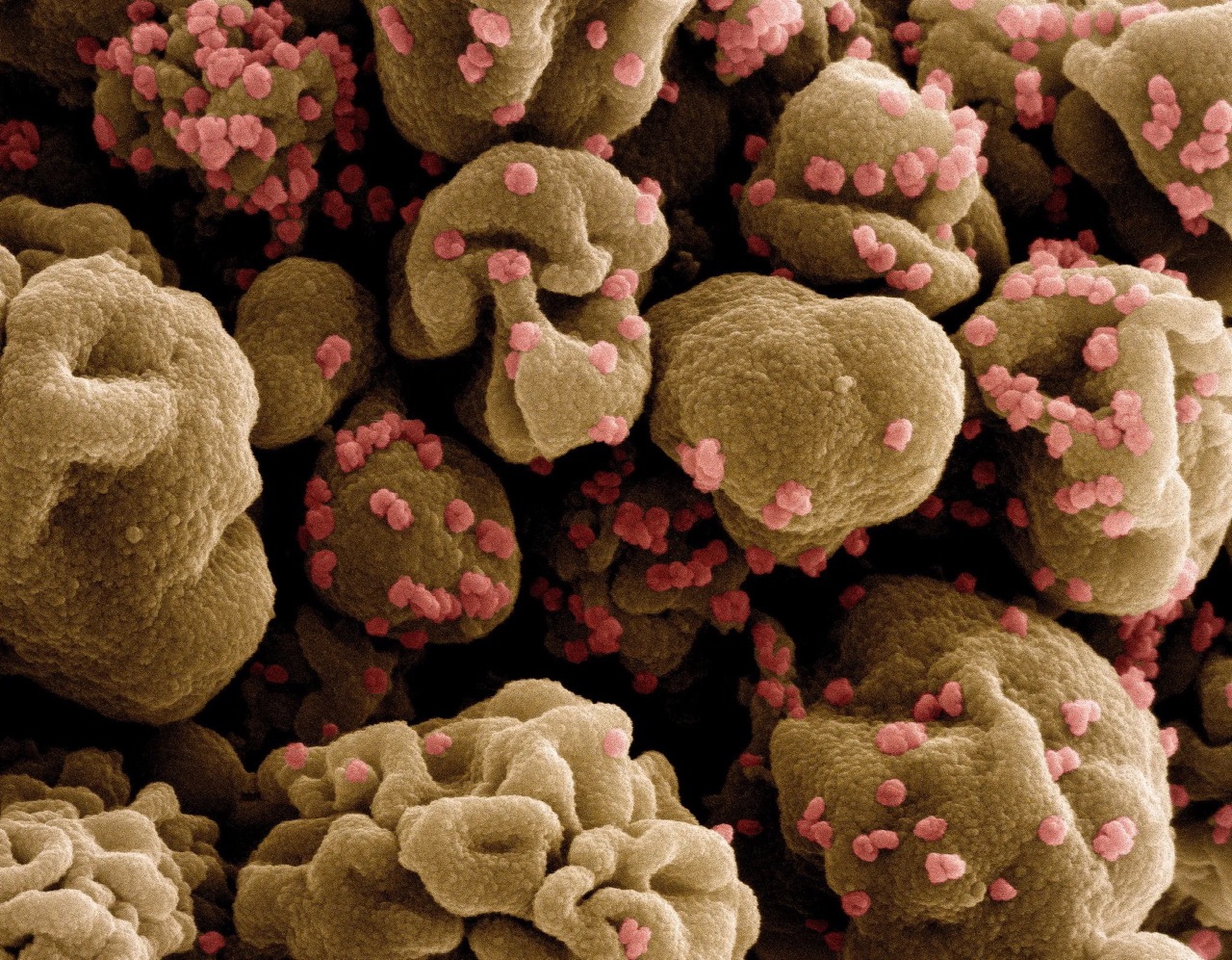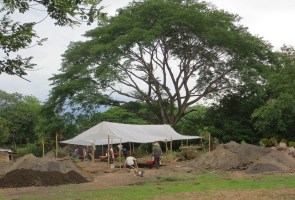COVID-19 is back in Santa Barbara by all accounts. The poop data is up, and urgent care centers are seeing a lot of cases.
“We’ve had a pretty busy summer so far,” said Dr. Alex Leasure, the medical director at Sansum Clinic Urgent Care. “People traveling, coming back, and feeling sick is a really common story I get,” he said. That’s to be expected when people travel away from the circle of their life at home and encounter hundreds of new people, and new viruses, often in confined spaces, Leasure explained.

Across California, positive tests were up 12.8 percent during the week of July 15. That’s 1.9 percent more than the previous week, and it’s also higher than the mid-winter peak of 11.6 percent on January 4. The disease count began to rise in April after a COVID positivity low of 1.9 percent. Data for Santa Barbara County is not available, as individual counties stopped collecting info a couple of years ago, but everyone’s poop provides clues. The Cal-SuWers network surveils wastewater statewide for SARS-CoV-2, the virus that causes COVID-19.
As far back as the 1940s, sewer water has been examined for disease. It was polio then, as it is in Gaza today, but for local health departments, wastewater displays COVID-19 virus even before people show symptoms. At Santa Barbara’s El Estero Wastewater Treatment Plant, the concentration of virus was 0.000597 on July 18, the latest date available, compared to 0.000108 in mid-April. The poop count peaked this year on January 2 at 0.001814.
COVID tends to present as any of a set of symptoms or a weird combination of them, Dr. Leasure said. “COVID symptoms are highly variable, but typically they start as a sore throat or a cough, or the person feels tired.” If a person is healthy and relatively young, COVID can be like a mild cold. Symptoms can be treated like a cold, with rest, lots of liquids, and over-the-counter medicines if needed.
“The severity of the disease really depends on people’s age and comorbidities, or if they have chronic conditions like kidney disease, need dialysis, have had an organ transplant. They could become quite sick, from any virus, COVID among them,” said Leasure, who is a family doctor by training, and sees patients young and old and in between. Paxlovid, the drug President Biden took to recover from COVID, is only available by prescription, as it can interact negatively with other medications.

Leasure will often test patients for COVID because the symptoms are so varied. Sansum uses a nucleic acid amplification test, which duplicates the genetic material and then looks for a certain signal for SARS-CoV-2. Home tests work well as long as the sample contains a good amount of mucus, he said, and the test has not expired.
As far as returning to work or a normal routine, Leasure said it depended on your job. “If you work at an elder-care facility, you want to stay home for five days and then wear a mask for five days,” he recommended as the simplest way to remember quarantine guidance. “You want to avoid exposing people at high risk, including newborn babies. If you’ve tested positive and you’re going to see your 98-year-old mom, you should wait 10 days after the positive test even if your symptoms are better.”
In fact, people are often aware of this, especially if they have elderly parents. “This might be the only bright side to the horrible pandemic we had, in which so many people died,” Leasure said. “People are more cognizant of not sharing viruses.”
The best way for people to lower their risk of severe illness from COVID is to stay up to date with the latest COVID-19 vaccines. Updated 2024–2025 vaccines are expected to be available in fall 2024 as early as this August. For more information, see the CDC’s page on COVID-19 vaccines.
Premier Events
Sun, Jan 11
3:00 PM
Santa Barbara
Mega Babka Bake
Sat, Jan 03
7:00 PM
Santa Barbara
Nic & Joe go Roy
Sat, Jan 03
8:00 PM
Santa Barbara
No Simple Highway- SOhO!
Sun, Jan 04
7:00 AM
Solvang
Solvang Julefest
Mon, Jan 05
6:00 PM
Goleta
Paws and Their Pals Pack Walk
Mon, Jan 05
7:00 PM
Santa Barbara
Ancient Agroecology: Maya Village of Joya de Cerén
Tue, Jan 06
7:00 PM
Santa Barbara
Amazonia Untamed: Birds & Biodiversity
Wed, Jan 07
7:30 PM
Santa Barbara
SBAcoustic Presents the John Jorgenson Quintet
Thu, Jan 08
5:30 PM
Santa Barbara
Blueprints of Tomorrow (2026)
Thu, Jan 08
6:00 PM
Isla Vista
Legal Literacy for the Community
Thu, Jan 08
7:30 PM
Santa Barbara
Music Academy: Lark, Roman & Meyer Trio
Sun, Jan 11 3:00 PM
Santa Barbara
Mega Babka Bake
Sat, Jan 03 7:00 PM
Santa Barbara
Nic & Joe go Roy
Sat, Jan 03 8:00 PM
Santa Barbara
No Simple Highway- SOhO!
Sun, Jan 04 7:00 AM
Solvang
Solvang Julefest
Mon, Jan 05 6:00 PM
Goleta
Paws and Their Pals Pack Walk
Mon, Jan 05 7:00 PM
Santa Barbara
Ancient Agroecology: Maya Village of Joya de Cerén
Tue, Jan 06 7:00 PM
Santa Barbara
Amazonia Untamed: Birds & Biodiversity
Wed, Jan 07 7:30 PM
Santa Barbara
SBAcoustic Presents the John Jorgenson Quintet
Thu, Jan 08 5:30 PM
Santa Barbara
Blueprints of Tomorrow (2026)
Thu, Jan 08 6:00 PM
Isla Vista
Legal Literacy for the Community
Thu, Jan 08 7:30 PM
Santa Barbara























You must be logged in to post a comment.